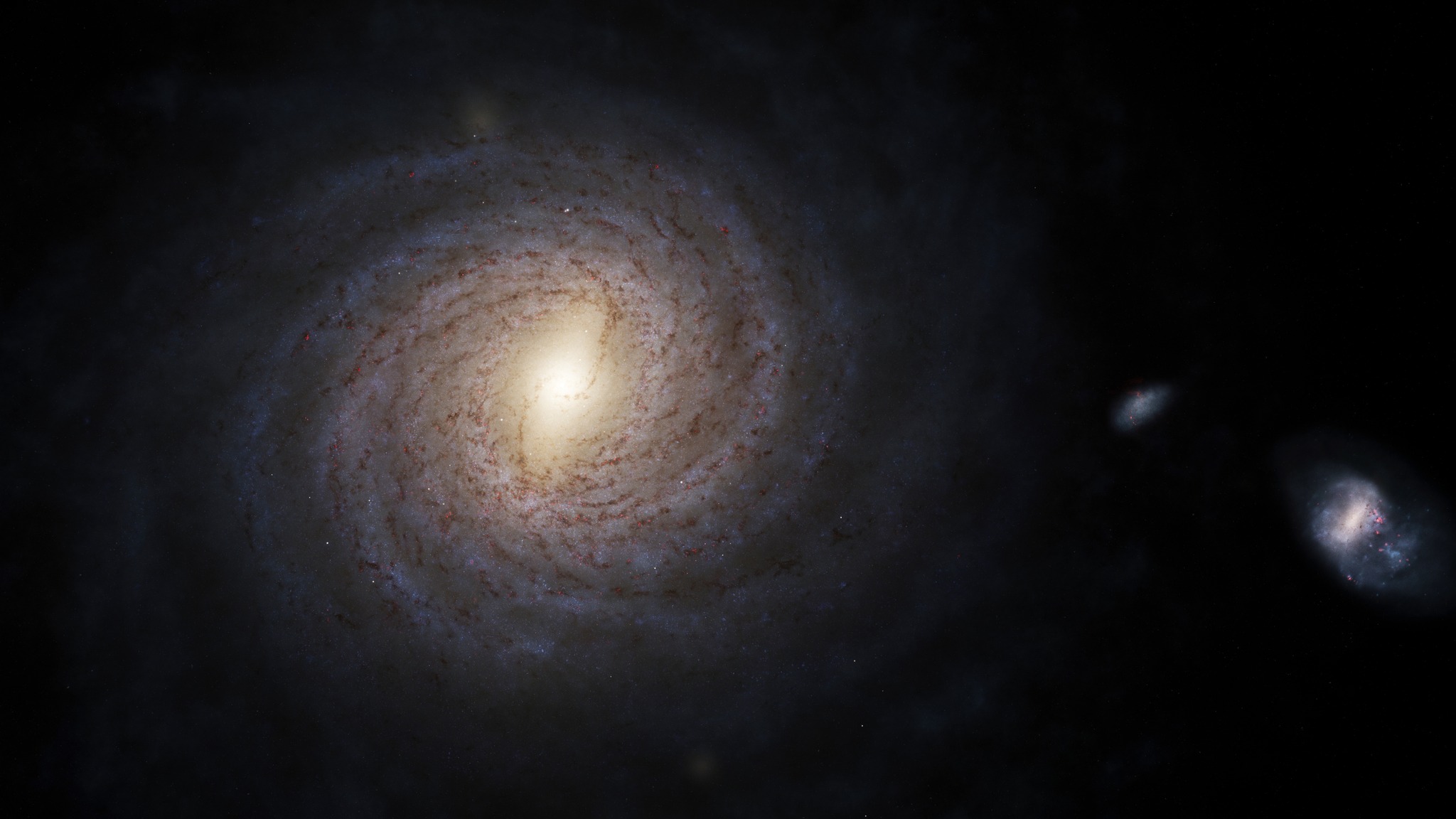I study the Milky Way galaxy—where we live—and the satellite galaxies that are in orbit around the Milky Way. In particular, I study the dark matter that surrounds us. I’ll explain this in more detail below!
What is the Milky Way?
The Milky Way is a galaxy, a collection of gas and dust and stars, one of which is the Sun. There are around a hundred billion stars in the Milky Way galaxy. When you look up at the night sky, most of what you see are these stars, our neighbors in the Milky Way. We’re located near the outskirts of the galaxy, around 25 thousand light years from the center.
What is Dark Matter?
By the 1970s, we had telescopes that were good enough to measure how fast stars move in galaxies like the Milky Way. An influential paper by Vera Rubin showed that these stars are faster than expected, which means that they are experiencing a stronger gravitational pull than they should—there’s more stuff in a galaxy than what we can see. Since this extra stuff is invisible (or “dark”), it was given the name “dark matter.”
The current understanding is that in the very early Universe, this dark matter started to clump together through its gravitational pull. These clumps, or “halos,” then pulled in gas, which eventually formed the galaxies that we see today. This means every galaxy sits in the middle of one of these dark matter halos. The Milky Way’s halo is about ten times the size of the galaxy itself!
The precise properties of dark matter are still undetermined. It doesn’t seem to interact through any of the forces except gravity. If it does ever interact with normal matter, it must do so very rarely.
How do I study Dark Matter?
I study dark matter through the evolution of galaxies and the halos they live in. The Milky Way, like all galaxies, assembled hierarchically. That means that it grows by accreting other, smaller galaxies; these “dwarf galaxies” get pulled in by the Milky Way’s gravity until they eventually merge completely with it. These galaxies all live in their own dark matter halos, and so the Milky Way accretes their dark matter too.
